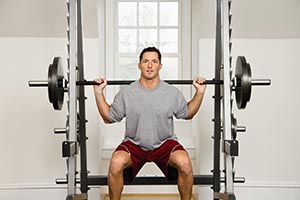 If you're like many people, you suffer from some kind of aches and pains. We see many professionals in our practice whose lives are negatively affected by some kind of back or neck discomfort. Luckily, research shows that strength training can help reduce pain.
If you're like many people, you suffer from some kind of aches and pains. We see many professionals in our practice whose lives are negatively affected by some kind of back or neck discomfort. Luckily, research shows that strength training can help reduce pain.
A Danish study followed 42 women who were plagued by trapezius pain. The trapezius forms a triangle between the neck, shoulders, and upper back, and is a typical source of neck and shoulder problems in professionals. All of the women in the study engaged in repetitive work all day at their jobs.
The women were randomly placed into one of three separate groups:
- The first group performed strength training exercises for 20 minutes, 3 times a week. Each workout included 3 out of 5 high-intensity techniques devised specifically for the neck and shoulder muscles.
- The second group did leg workouts for 20 minutes, three times a week. They rode stationary bikes, and allowed their arms to hang relaxed at their sides.
- The third group were given counseling on "workplace ergonomics, diet, health, relaxation, and stress management for a total of (one hour) per week but were not offered any physical training."
Researchers meticulously recorded the womens' muscle strength at the beginning and conclusion of the study, and recorded their levels of neck discomfort each week.
Though all of the women continued their jobs during the study, the women who performed strength exercises shared a 79% drop in the intensity of their pain. The women in the other groups mentioned no significant pain relief.
If you suffer from neck or back pain, it's important for you to know that there are non-invasive solutions. We can work with you in our office to build a treatment plan that combines chiropractic care and specific exercises to help you get pain free.
Give our Florham Park, NJ office a call today at (973) 845-6282 to make an appointment.
Andersen LL, Andersen JL, Suetta C, Kjaer M, Søgaard K, Sjøgaard G. Effect of contrasting physical exercise interventions on rapid force capacity of chronically painful muscles. Journal of Applied Physiology. 2009;107(5):1413-9.



